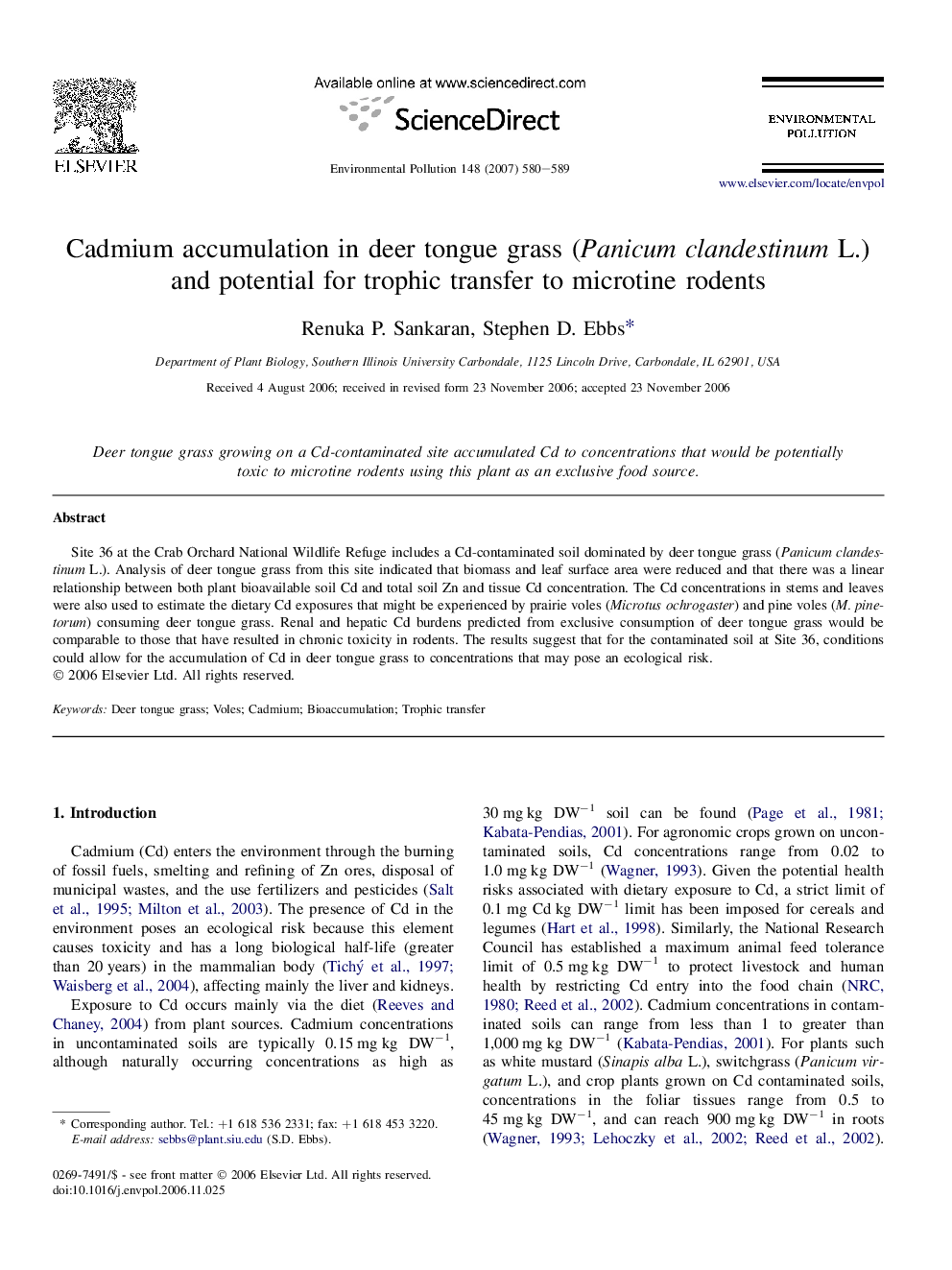| Article ID | Journal | Published Year | Pages | File Type |
|---|---|---|---|---|
| 4427624 | Environmental Pollution | 2007 | 10 Pages |
Site 36 at the Crab Orchard National Wildlife Refuge includes a Cd-contaminated soil dominated by deer tongue grass (Panicum clandestinum L.). Analysis of deer tongue grass from this site indicated that biomass and leaf surface area were reduced and that there was a linear relationship between both plant bioavailable soil Cd and total soil Zn and tissue Cd concentration. The Cd concentrations in stems and leaves were also used to estimate the dietary Cd exposures that might be experienced by prairie voles (Microtus ochrogaster) and pine voles (M. pinetorum) consuming deer tongue grass. Renal and hepatic Cd burdens predicted from exclusive consumption of deer tongue grass would be comparable to those that have resulted in chronic toxicity in rodents. The results suggest that for the contaminated soil at Site 36, conditions could allow for the accumulation of Cd in deer tongue grass to concentrations that may pose an ecological risk.
